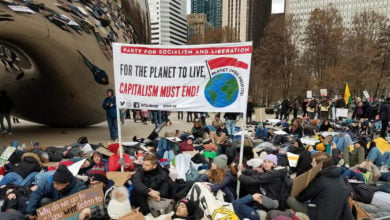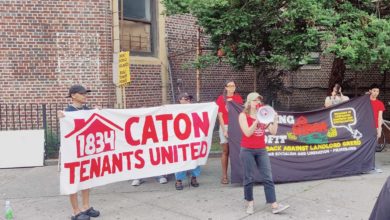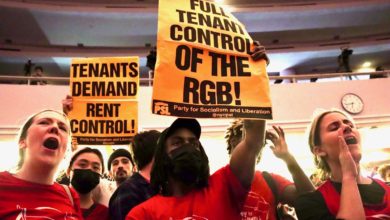On June 28, two days before California’s eviction protections were set to expire, governor Gavin Newsom signed into law Assembly Bill 832. The bill extends eviction protections through September and adds an additional $2.6 billion of federal funds to the state’s rent-debt relief program.
In the week leading up to the bill’s passage, The New York Times published an article with the headline “California Has a Plan to Pay the Back Rent for Low-Income Tenants. All of It.” Other corporate media outlets published articles making similar claims. The Governor’s office itself issued a self-congratulatory press release describing the package as: “The largest and most comprehensive COVID rental protection and rent relief program of any state in the nation.”
Missing from this PR push’s narrative is the fact that the state has been so slow to distribute the funds that there may still be hundreds of thousands of households at threat of eviction by the end of September. The Sacramento Bee reported June 24 that the state has received 54,520 tenant applications for a total of $687.8 million in back rent relief, but only distributed $61.6 million to 5,443 households.
The National Equity Atlas’s rent debt tracker reports there are at least 758,000 households behind on rent in California, and this number is likely to be systematically undercounted. In other words, in the nearly six months that California has had some form of rent relief program, fewer than 7% of households with rent debt have even applied for rent relief. Only about one in 10 of those applications have been processed and distributed.
Many tenants are struggling with the state’s online-only application process. According to a survey by Housing Now, nine in 10 applicants were limited by technological barriers, such as lack of internet access, and 59% of applicants were hindered by poor translation on the website. A representative from the San Francisco Anti-Displacement Coalition described the website as “essentially inaccessible” to people speaking languages other than English.
Several cities and counties across the state, including Los Angeles and San Francisco, have passed their own eviction protection measures closing some of the loopholes or extending further into the future than the state’s September cutoff. AB 832 actually nullifies those extensions, adding the clause to state civil code that “1179.05 (2)(A) If the provision in effect on August 19, 2020, required the repayment period to commence on a specific date on or before May 1, 2022, any extension of that date made after August 19, 2020, shall have no effect.” In this respect, the law actually removes protections for renters!
Another fact corporate media reporting has largely overlooked is that the program uses public money to pay off back rents. This represents a massive transfer of wealth from public funds to private banks and landlords.
The banks, real estate speculators, and corporate landlords are the ones responsible for California’s extreme housing crisis — they should be ones to foot the bill for rent relief.
What tenants really need is a comprehensive cancellation of rents. That means rendering all owed rent debt uncollectible, coupled with a cancellation of mortgages, so the banks are forced to cover the tab. We need an iron-clad ban on evictions, and a program to permanently house homeless people by taking over vacant housing.





